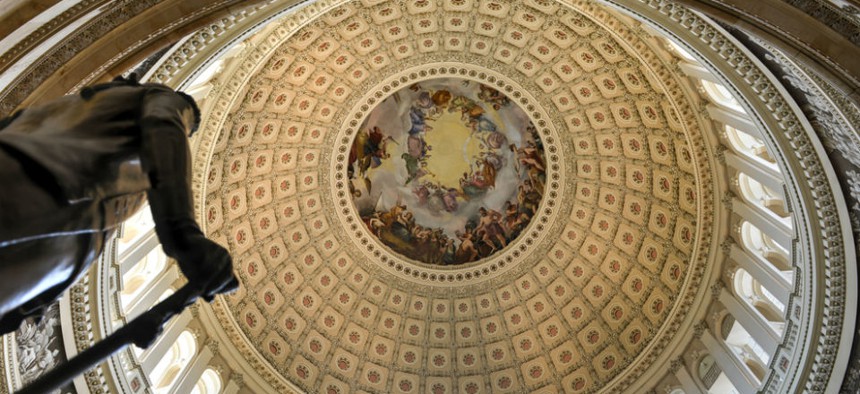
Felix Lipov/Shutterstock.com
Workforce Cuts in House and Senate Budgets, in One Chart
House and Senate negotiators are finalizing a spending blueprint.
In the coming weeks, lawmakers will come together -- or attempt to come together -- on a legislative blueprint with potential to drastically reshape the federal workforce.
The House and Senate have each passed their own budget proposals, and neither option paints a particular pretty picture for federal employees. Both frameworks call for lower compensation for federal workers and retirees, dramatic cuts to agency spending and huge reductions in agency rolls.
While the Republican majorities in the upper and lower chambers will have major obstacles to overcome in order to pass a unified document, including differences in Defense spending and cuts to Medicare and Medicaid, they are largely in agreement on the need to put some deficit reduction on the backs of federal employees. The exact path to reach those cuts, however, differs in several key ways.
The House proposal calls for more than $280 billion in cuts over 10 years through measures such as pension reforms, health care changes and attrition measures, according to a Government Executive analysis of Republican estimates. Senate Budget Committee aides have said their proposals would save $170 billion over 10 years.
The House Budget Committee spelled out very specific proposals in a report on its framework. While Senate committee aides laid out top line federal workforce savings, they said the specifics of their proposals would be left for relevant committees to determine. They cited the National Commission on Fiscal Responsibility and Reform -- known as the Simpson-Bowles Commission -- as guiding their reduction efforts.
“We generally do not assign specific numbers to these assumed savings or prescribe specific legislative fixes,” a Senate aide said. “The Senate budget leaves it up to the committees of jurisdiction to responsibly address these issues with future legislation.”
One major difference in the Senate and House proposals is how deeply they would slash agency spending. The House measure proposes $760 billion in cuts -- below sequestration levels -- to discretionary funding at non-Defense agencies over 10 years, while the Senate suggests $236 billion. President Obama’s budget would fund agencies at well above sequestration levels.
Now that both chambers have passed a budget plan, Republican leadership will turn to a conference committee to hammer out the differences. Committee leaders had hoped to reach an agreement by April 15, but with Congress on recess through next week, more time will likely be required. Once negotiators reach a compromise framework, final passage will require a simple majority in both houses and would not need Obama’s signature.
The legislative proposals contained in the budget would be just that; they would not become law but would chart a course for the congressional agenda over the next 20 months. The top line funding levels would provide constraints in which appropriators would have to work. Obama has threatened to veto any measure that does not walk back the cuts established by the Budget Control Act, setting up a potential fiscal showdown later this year.
Before lawmakers reach that point, they must first agree on what provisions to include, and with what specificity to benchmark proposed cuts. Here’s a look at what each chamber has proposed:
(Image via Felix Lipov/Shutterstock.com)






